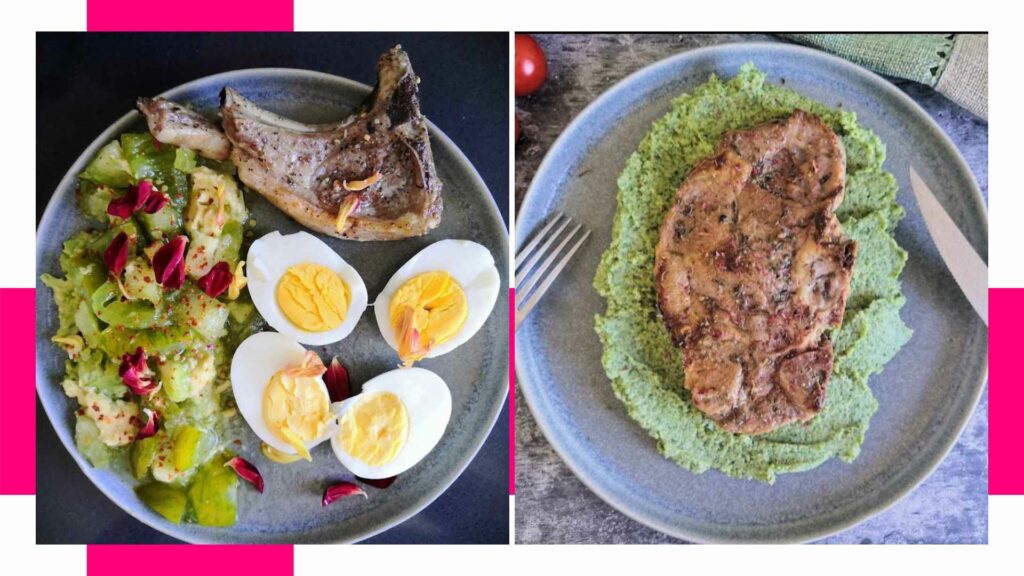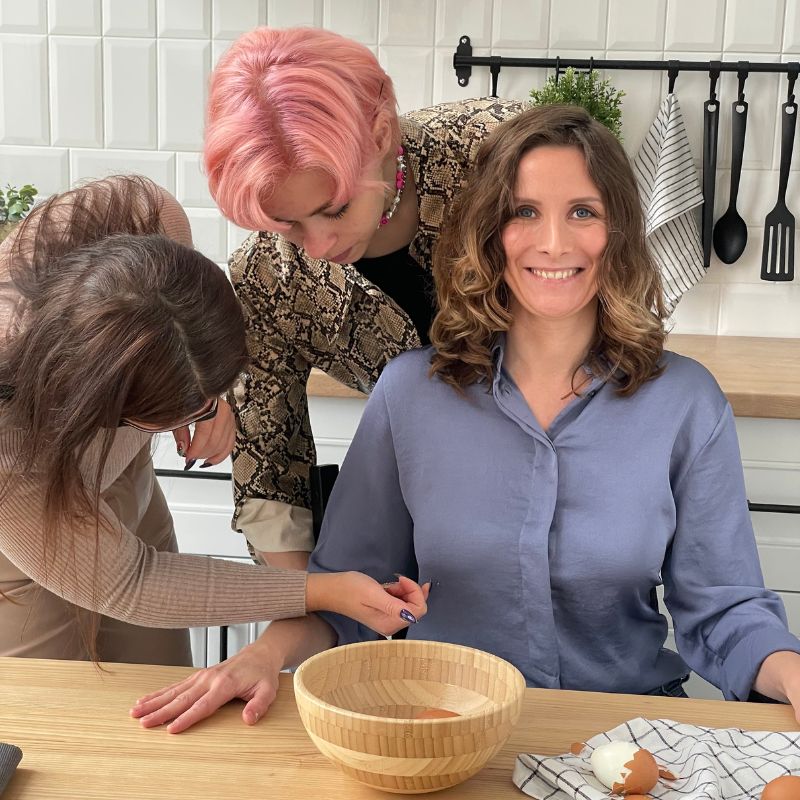If you are not good at math and don’t want to eat with scales (which is completely normal, actually) here is the keto coach’s easy guide on starting a low-carb diet and understanding your macros and portion on the keto diet.
The keto diet is easy. It’s a very natural nutrition when you eat good quality food to satiety, when you are hungry. But we come to the keto diet after years of SAD diet, or calories limiting diet, or weird systems when you need to combine ingredients like it’s a witch’s potions, and not a salad. Previous unsuccessful experiences teach that there is no easy way. But I am sure, like thousands of my clients, you will know how to count macros and portion on the keto diet after this article. For a start, I ask you to forget about classic macros on the keto diet you’ve probably heard about – 80-15-5, where 80% of calories come from fat. These numbers are from medical protocols, not for common keto life.
Author: Olena Islamkina, Primal Health, Keto, Carnivore, IG coach
All principles in 1 minute
- Every day, eat a palm-sized serving of whole-fat protein: meat, fish, or poultry.
- Eat a portion of greens and vegetables the size of 3 palms or less daily.
- Add fats until satiety. For example, dress your salad with olive oil.
- Eat less than a handful of nuts, berries, or a small piece of cheese for dessert. You don’t need to eat those if you don’t want to!
- Eat only if you feel hungry and to satiety.
- Do not eat just because it’s time to eat if you are not hungry.
- Do not tolerate hunger.
Quality is a priority
The main keto rule
All keto principles In 10 minutes
On the keto diet, we eat whole, natural, normal-fat foods and vegetables that grow above the ground. Period.
How to understand your portion on the keto diet
To imagine the portion size, look at your palm. This (plus a little more) is your daily portion of meat, fish, or poultry.
Meat, fish, and poultry are high in protein – the most important macronutrient on the keto diet. It is your priority and goal. In any incomprehensible situation (fast food, road eatery, molecular cuisine restaurant, away), eat protein with a normal amount of fat (that is, legs – not chicken breast, neck – not tenderloin).
If you eat three times a day you need protein-rich food the size of your palm without fingers, with each meal.
If you eat twice a day: high protein food the size of your palm + half of your fingers, with each meal.
If you eat once a day: 1 piece of high protein food the size of your palm + a little more.
If you eat minced meat, meat patties, a mountain of shrimps, or eggs: 1 fist = 1 palm without fingers.
Don’t be afraid to overeat protein. The keto diet is a high-fat, low-carb, protein-centric diet.
When you think about a meal, think about protein first.
The principle of the low-carb plate: how to count macros on keto and not to count calories
- Put a fatty, juicy piece of meat, fish, or poultry on your plate.
- The rest of the plate should be filled with vegetables seasoned with olive oil or cooked in ghee or animal fat.
Carbs
These are the vegetables and salad on your plate. Keep them within 20-25 g carbs per day. Not 25g of veggies, but digestible carbs in it. That means only carbohydrates minus fiber count.
Example: 1 cup of kale weighs 67g and contains 6g of total carbs, but less than 1g of digestible carbs (net carbs). Memorized? Now, you can forget it forever.
We do not need to count – eat all kinds of vegetables growing above the ground (plus radishes, celery root), greens, some berries, and nuts.
The approximate amount of vegetables and greens that you need per day fits in three handfuls.
Three handfuls of greens are the maximum that will allow you not to exceed carbohydrates and add some pleasure – nuts, cheese, and berries.
Is it allowed to eat fewer vegetables on the keto diet? Yes, it is. The fiber in our diet is overrated. Eat veggies if you like them, and feel good after eating them. Cut them, if you’ve always thought that broccoli is “ugh”.
We don’t eat fruit and legumes on keto.

Fats
Eat to satiety. This amount will vary significantly at the beginning of the diet and when you are fat-adapted, if you lose weight or follow the diet to be healthy and energetic. Eat juicy, fatty parts of meat, the fattest fish, poultry legs, and wings. In addition to protein, eat salads dressed in olive oil. Listen to yourself and adapt the amount of fat accordingly.
Two rules: eat only high-quality fats and do not drink or eat fats separately from protein. Even if you drink bulletproof coffee do it only with meals – not instead.
IMPORTANT:
- Eat when you’re hungry until you’re full. No need for willpower or mathematics to reduce calories. Allow the body to switch to the energy of fats and begin to recover.
- Don’t be in a hurry to practice intermittent fasting. Perhaps you will not want to eat your third meal a day after the first week of keto. If so, great. But do not lengthen periods without food intentionally. You are already doing everything right if you are eating three meals a day. Don’t force things. If it’s difficult for you to eat three times a day at the start, it’s ok. Try to avoid small portions and snacks. If hunger comes, sit down and eat properly, even if the last meal was 2 hours ago. Your body needs time to adjust to a new regimen.
Sometimes our ability to distinguish between satiety and hunger can be damaged because of hungry diets, fructose, etc. In this case, set up three meals a day for the beginning. Eat one proper piece of fatty animal protein the size of your palm with each meal. Add some veggies if you want. Continue and monitor how you feel.
